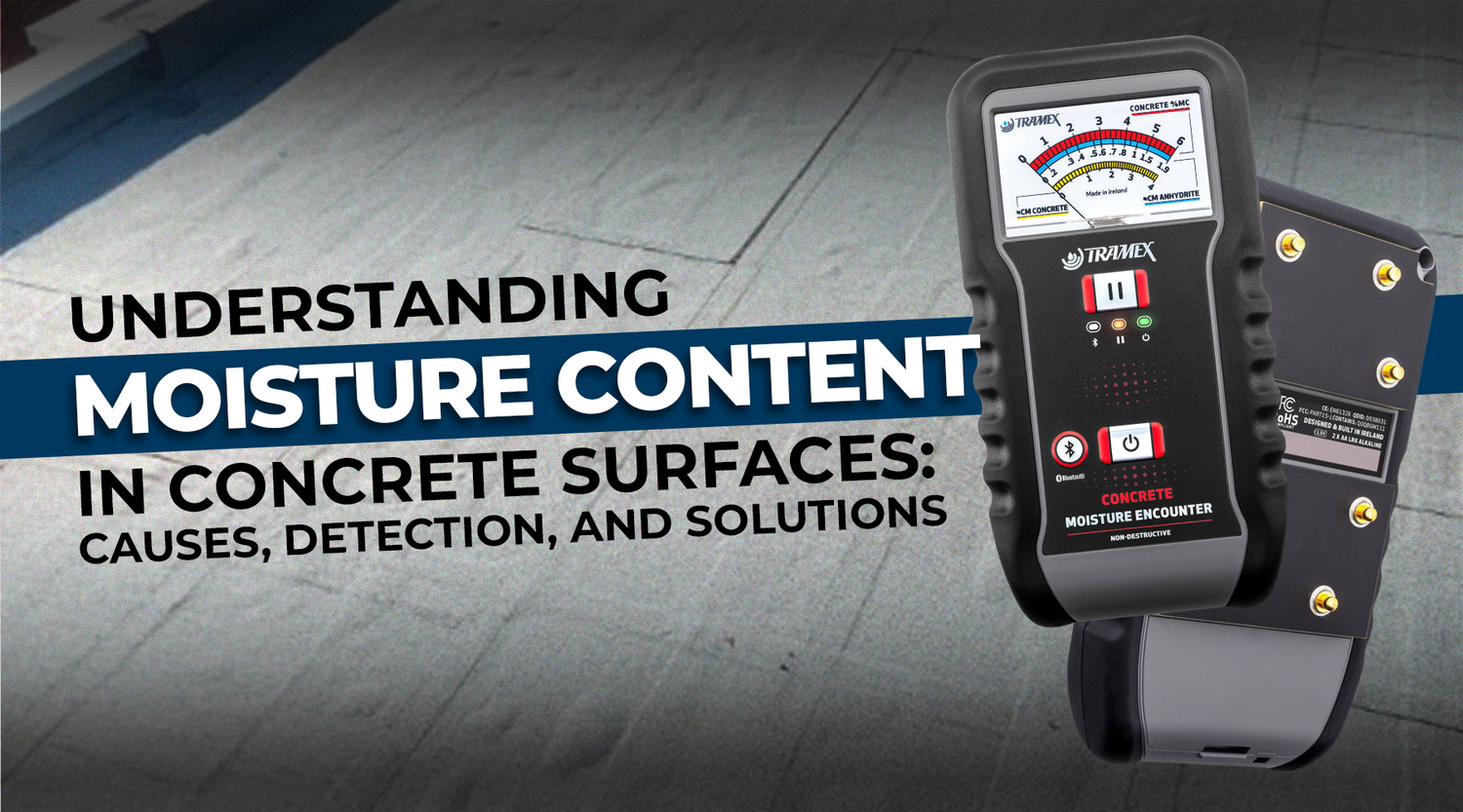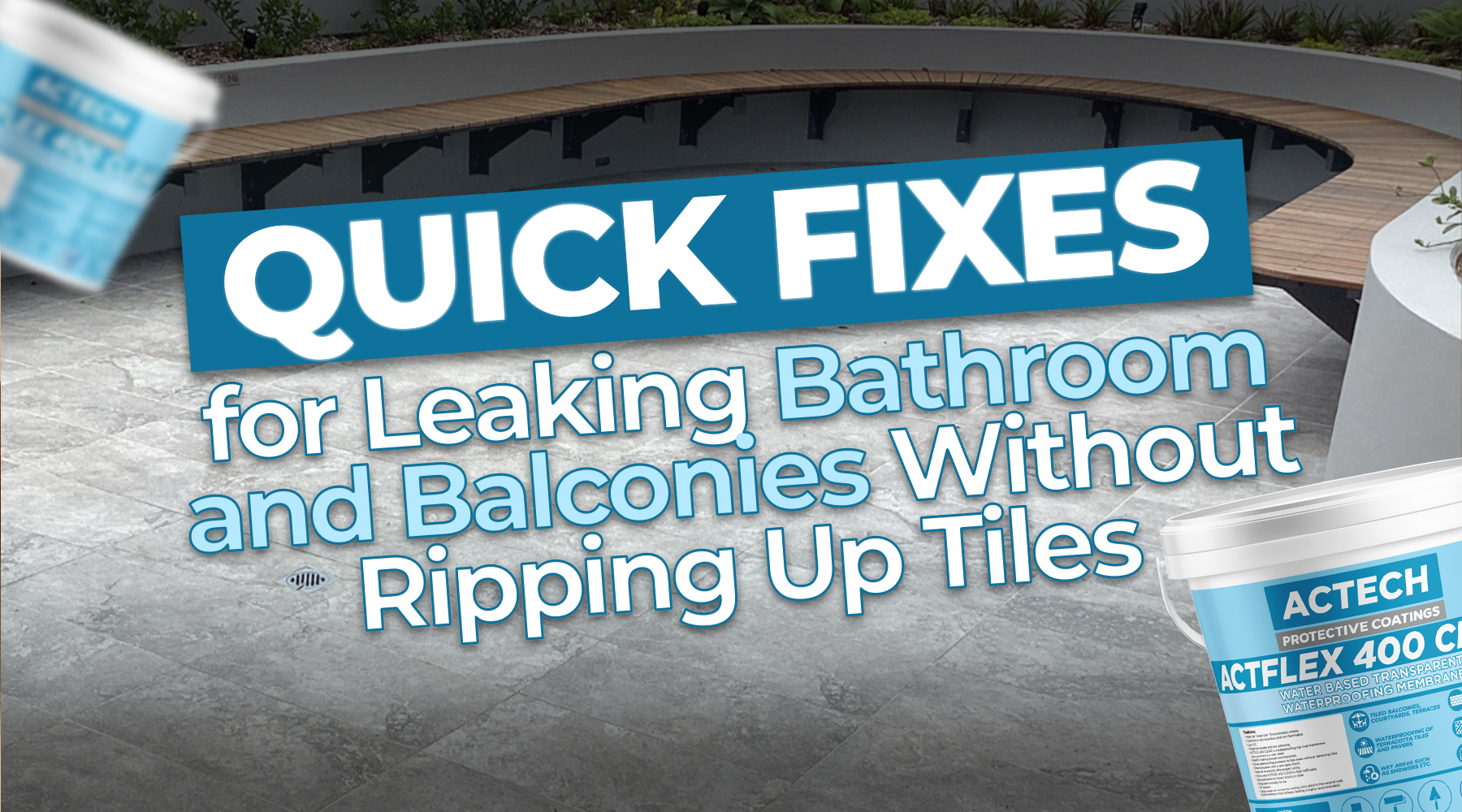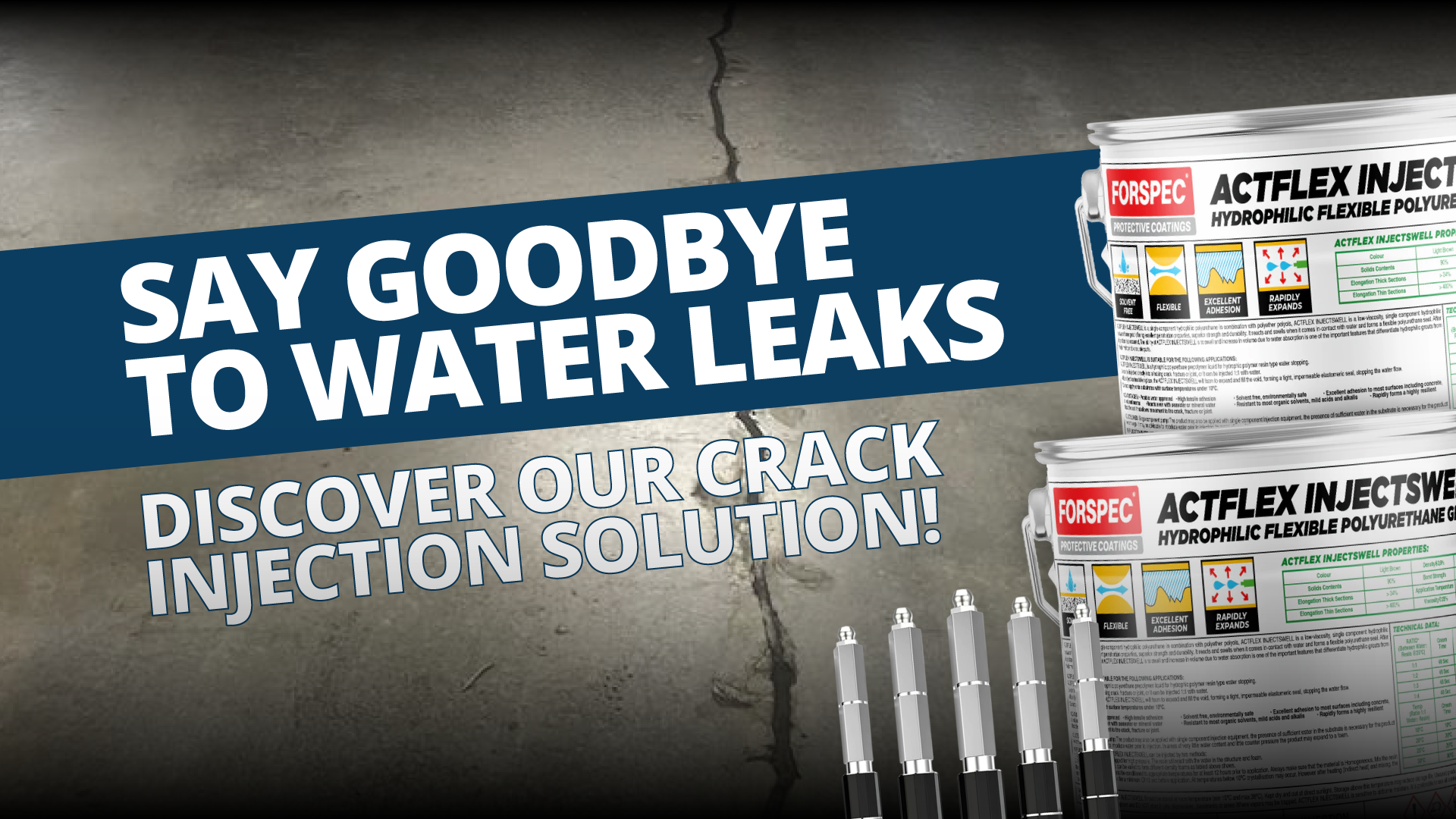Moisture is often the silent culprit behind many flooring and waterproofing issues, particularly in concrete surfaces. Excessive moisture content can lead to a host of problems, including adhesive failure, mold growth, and structural damage. Therefore, it's crucial to understand how to detect and address moisture in concrete surfaces effectively.
Detecting Moisture Content:
One of the most common methods for assessing moisture content in concrete is through non-destructive impedance testing. This method measures the percentage moisture content in the top ¾ inch (20mm) of the slab. Tools such as the Tramex Concrete Moisture Encounters CME5 or CMEX5 provide instant and precise quantitative measurements of moisture content using gravimetric testing as a baseline.

Interpreting Moisture Readings:
ASTM F2659 standardizes moisture testing procedures but doesn't specify the use of quantitative moisture meters. However, utilizing a calibrated, quantitative concrete moisture meter is essential for obtaining accurate moisture content readings. Comparative meters only provide relative indications, whereas quantitative meters offer actual moisture content percentage readings.
Addressing High Moisture Content:
Ideally, moisture content in concrete surfaces should be below 4-4.5% before flooring or waterproofing. In such cases, normal primers like ACTFLEX 600, ACTFLEX 700, or ACTFLEX 500 can be used.
However, if moisture content exceeds 4.5%, indicating high relative moisture levels, epoxy primers become necessary. ACTFLEX EP 250, for instance, acts as a moisture barrier when applied in two coats, effectively preventing moisture-related issues.
Potential Consequences of Ignoring Moisture Issues:
When flooring or waterproofing is applied to a substrate with high moisture levels, various issues can arise. These include pinholes, bubbles, delamination, and other defects that jeopardize the integrity of the membrane and its future performance. Addressing moisture issues before application is essential to prevent these problems and ensure the longevity of your flooring or waterproofing system.

When to Take Action:
Moisture testing should be conducted before any flooring or waterproofing application. By detecting and addressing moisture issues early on, you can avoid costly repairs and ensure the longevity of your concrete surfaces.
Conclusion:
Moisture content in concrete surfaces is a critical factor that requires careful consideration. By utilizing proper testing methods and selecting appropriate primers based on moisture levels, you can effectively mitigate moisture-related issues and ensure the success of your flooring and waterproofing projects.
For further guidance on moisture testing or product recommendations, feel free to reach out to us at sales@thewaterproofingshop.com.au. Let's work together to keep moisture at bay and preserve the integrity of your concrete surfaces.




Leave a comment
This site is protected by hCaptcha and the hCaptcha Privacy Policy and Terms of Service apply.